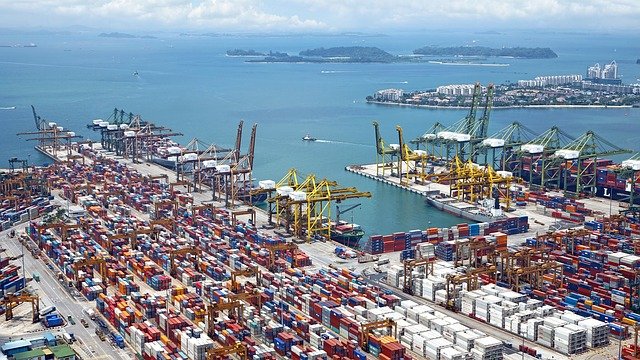Here is how Sea Ports in the world are adapting to digitization

International trade is fascinating and challengingly exhausting at the same time! Traders make a fortune, contribute to the economy and uplift our standards of living by taking those challenges with enthusiasm. If there is one thing that has made the shipping process more convenient and permissive than before, it would be technology! Yes, the world seaports and the shippers have been using advanced technology to provide the best services! The modern age tools and instruments are helping the port authorities to rule out the hurdles efficiently. While traders are doing great with the internet, hi-tech computers, mobile phones, etc., the port authorities are utilizing technology for better things.
The world sea ports connect the two far-drifted ends of the trading countries’ coastlines to facilitate the trade operations headed by the traders. There are so many tasks performed regularly on the ports, including the loading/unloading, towing the heavy shipping containers, storing the containers in the yards and warehouses, etc. Completing all these tasks with the help of technologically advanced tools makes the entire process more comfortable. Let us see how the world seaports are adapting to digitization.
The world seaports manage the container traffic all around the year.
Digitization of Seaport Services: A Breakthrough
The digital solutions connecting the world sea ports in a more convenient and far-reaching communication process has been a great breakthrough! The transport chains, loading/unloading facilities, sailing and shipping services, etc., are making international trade efficient. Traders are experiencing a well-channelized shipping process, given the digital networking of seaports provides a pool of opportunities to them. Port authorities are also moving to an active role in offering optimizing operations.
Some Examples of Digitization Used on The Ports
The world sea ports are already reaping a range of benefits using the digitized tools. These devices have made the shipping process easier, safer and efficient than it was ever before. The advancement of technology depends from one country to another, but the collaborative sharing of data brings exposure. The idea of “Digital Ports” is in progress with some productive tools in the service stream.
GPS & RFID Digitization
GPS (Global Positioning Digitization) services help track the vessels and containers, get the live feed of the containers around the yard, surveillance systems, etc. RFID (Radio Frequency Identification) helps in checking the authenticity of documents, bills, monetary transactions, etc.
AGVs (Automated Guided Vehicles)
AGVs are wheel-based and remote-controlled vehicles with a small flatbed to carry the cargo around the port and warehouses. These vehicles follow marked lines or wires for efficient movements and carry heavy load easily. They reduce the need for laborers to carry the cargo. The sensor-based model of these cargo carriers offers great help to the port authorities.
CTA (Container Terminal Alterwarder)
CTA is a terminal layout in Germany with robust technology and equipped with some of the best tools. It is the most modern container terminal in the world. The entire area enjoys the service of 53 vehicles and 22 pairs of different types of cranes. The terminal makes it easier and convenient to perform the operations at the port. This one is the most advanced terminal in the history of world sea ports.
Remote Controlled Towing Cranes
Just like AGVs, there are different types of towing cranes with higher weighing capacity and service. Most of the port authorities in India are using these remote-controlled devices to facilitate loading and unloading of the containers on the vessel.
Container Tracking Facility
Container tracking facility is one of the most commonly used technology that the traders are using efficiently for a long time. Shippers and freight forwarders do their best to offer the most efficient GPS technology that will offer the live feed of their cargo.
Benefits of Digitization in International Trade
Digitization has a bucket full of benefits to the present and the future of seaports. Traders, shippers, the customs department and every other party associated directly with the industry are saving time, money and effort by utilizing some of the best tools. Here are some of the benefits of these advanced tools to the shipping industry. The authorities can plan and implore to get the best of them.
- Reduces the cost of handling the goods around the port.
- Speeds up the port operations and transit response time of the cargo and other goods.
- The electronic system reduces the uses of paper and provides faster communication.
- Improve trace and track efficiency by using the GPS systems on the vessels, containers, and other vehicles.
Digitization is the future of the world sea ports as new technologies are on their way to make things better than they already are! All the port owners, authorities and government organizations are making their way into it. Traders must also start adapting to this turn of events and become comfortable with using digital devices. Planning ahead of time and anticipating the best of all is what traders must do!

